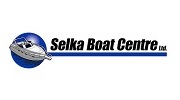September 1, 2017
This is the 3rd article concerning invasive zebra and quagga mussels and their threat to the Columbian River Basin and speaks to the governmental and volunteer organizations that have been developed to deal with the potential infestation.
The Columbian River Basin encompasses Montana, Idaho, Oregon, and Washington in the US and British Columbia in Canada. The Columbia originates in the BC Rockies and boarders Alberta to the east and Kinbasket Lake, Revelstoke and Kelowna in northwest BC, flowing south into the US where it empties into the Pacific Ocean near the Oregon/Washington border.
In British Columbia the Ministry of Environment through the Inter Ministry Invasive Species Working Group “IMISWG” leads the implementation of the Early Detection and Rapid Response System “EDRR” for invasive species, including zebra and quagga mussels. The Poachers Hot Line falls under the BC Conservation Office at (1 887 952 7277). In 2016, the Government of BC provided over $2 million to BC government agencies to support the invasive mussel program. The money has been used to open 8 permanent invasive mussel inspection stations at major entry points on the Alberta and US borders supported by 32 conservation officers. In additions 6 new decontamination stations have been added to the effort.
The Invasive Species Society of BC “ISSBC” located in Williams Lake is a “not for profit” organization. It was established over 10 years ago to provide information, education, research, organizational assistance, training for identification and reporting, and management of invasive species for both public and private organizations. There are 26 members on their BOD with representation from Federal, Provincial, Regional, Local, First Nations governments and a wide cross section of industry including forestry, transportation, agriculture, and tourism to name a few. They are funded by over 45 corporate, public and governmental organizations. Additionally in 2016, a joint agreement was formed among Alberta, BC, Saskatchewan, Manitoba and
the Yukon government ministers to enable increased coordination among jurisdictions. The aim is to share resources and planning related to prevention and response to aquatic invasive species including preplanning related to watercraft inspection stations to avoid duplication and to connect with other resources from other provinces in the event of any invasive mussel detections.
Lastly, since invasive mussels do not comply with our border crossing laws the “100th Meridian Initiative” agreement was organized among State, Provincial, Federal, Regional and Local government agencies to prevent the westward spread of zebra and quagga mussels in North America.
Ok! Fairly boring so why all the fuss and hurry to get these structures in place?
A few facts:
One female invasive mussel can produce up to one million off spring in 1 year.
Invasive mussel larvae (villagers) was discovered in Montana lakes in 2016. It’s hoped they do not take hold.
Invasive mussels clear the water of good plankton, reducing fish food and increasing water clarity which in turn allows for the growth of nuisance algae on lake bottoms. At one time Lake Michigan’s visual depth was 20 ft and today it is 100 ft because of the plankton reduction.
These mussels are relentless and move fast once established!





